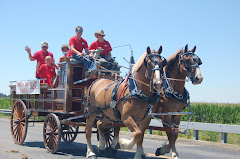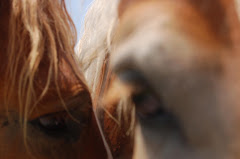Here's a bit of history on the Jack Russell Terrier "type" of dog. I say type because they do not seem to be purebred in the sense that they have a broad genetic make-up and vary greatly in size and type. There are differing opinions and often heat discussions on what constitutes a Jack Russell Terrier or Parson Russell Terrier and which is the "true" Russell Terrier. Since I am not breeding these dogs, I'm not going to get into the discussion or argument on which is which. For my part, I could care less about their size, color or pedigree. I just love their personality.
What is agreed upon though, is this "type" was developed by the Reverend John Russell in the early 1800s. Reverend Russell was well-known for breeding fox hunting terriers in Devonshire, England. From this strain developed the Jack Russell Terrier and the Parson Russell Terrier. For the most part, it is also agreed that the Jack Russell Terrier is the smaller, longer-bodied, shorter-legged dog used to hunt vermin and rabbits. They are usually 10-12 inches in height at the withers. My dogs would fall in this category.

The Parson Russell Terrier tends to be a longer-legged, square dog used to hunt or hold fox at bay. The Parson Russell Terrier is recognized by the American Kennel Club and is 13-14 inches in height at the withers.

The Jack Russell or Parson Russel is a working terrier. They are used on numerous ground-dwelling quarry and are built for work underground. (Hence, the reason my dogs are always getting in trouble!) They are meant to locate the quarry in the earth and then either bolt or hold it in place until it is dug to. (See Mom, they were only doing what they are "supposed" to do). They are bold, friendly, intelligent, athletic, fearless and vocal dogs. Because of their high energy level, they are not recommended for apartment dwellers unless the owner can provide the terrier the necessary amount of exercise and stimulation. Otherwise, they may destroy your personal belongings! These terriers are truly a big dog in a small package which can lead to trouble and injury with larger animals.
I am lucky to have a huge, fenced back yard for my terriers to run. During the winter months, they accompany me to the clinic where they hang out in my office and the clinic barn. My husband and I are amazed at how these dogs have become such a huge part of our lives. I grew up with large, outdoor only dogs and never thought I'd end up having
three dogs under 15 pounds......who sleep on my bed!! Just goes to show ya! Oh yea.....they are Colts fans!

 his is actually a very common injury. The laceration was fairly large and a "full skin thickness" laceration, meaning all the layers of the skin were lacerated. She had even lacerated the most superficial muscle layer covering her ribs. Even though these pictures do not show it well, there is a large flap of loose skin at the right edge of the laceration.
his is actually a very common injury. The laceration was fairly large and a "full skin thickness" laceration, meaning all the layers of the skin were lacerated. She had even lacerated the most superficial muscle layer covering her ribs. Even though these pictures do not show it well, there is a large flap of loose skin at the right edge of the laceration. 














 The testicle is exteriorized (brought to the surface) through the skin incision. The spermatic cord is then ligated (tied off) to prevent bleeding and then incised to remove. The spermatic cord consists of blood vessels, the cremaster muscle (the muscle which retracts the testicle) and the vas deferens (the "tube" which carries the sperm from the testicle through the penis). These two pictures show the testicle and spermatic cord exteriorized and then ligation. Keep in mind, these are pictures of a small (9 pounds), young dog.
The testicle is exteriorized (brought to the surface) through the skin incision. The spermatic cord is then ligated (tied off) to prevent bleeding and then incised to remove. The spermatic cord consists of blood vessels, the cremaster muscle (the muscle which retracts the testicle) and the vas deferens (the "tube" which carries the sperm from the testicle through the penis). These two pictures show the testicle and spermatic cord exteriorized and then ligation. Keep in mind, these are pictures of a small (9 pounds), young dog.






























